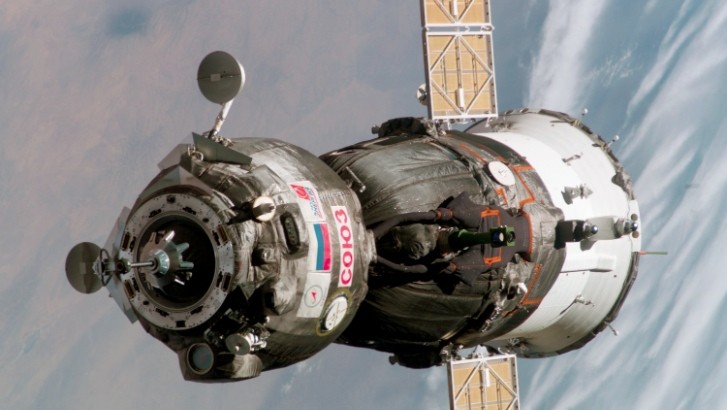While NASA scheduled to launch the first American-made spacecraft in 2017 and Tesla’s CEO Elon Musk just unveiling the Dragon V2 shuttle, it seems Russia won’t accept being left behind. Their latest announcement is that they are planning to fly space tourists around the Moon using their Soyuz spacecrafts by that year as well. However, the program is to run in collaboration with the American space tourism company, Space Adventures.
We all know about the tension going on between the world’s most powerful nations, U.S. and Russia, over disputes involving the Ukraine. Well, the rumors that the two are not so good friends anymore doesn’t seem to count when it comes to their space programs. Definitely not for their commercial ones, anyway.
Energia, the Russian rocket and space corporation, has just announced their plans to run a space tourism program that is to start its first flights in 2017. It’s about the same time NASA will get their first private-made new shuttle ready, the spacrafts now being designed through a governmental space program/competition. You know, the same program millionaire Elon Musk used the money from to build the first prototype he unveiled less that two weeks ago, the Dragon V2.
Furthermore, according to their official press release, the project will be carried out with Energia’s long-time partner... Virginia-based Space Adventures. The Russians want to take rich people into a trip around the, using their Soyuz 50-and-some-year old spacecrafts. In other words, Russians and Americans are planning to build up a common space tourism program to take its first launch by 2017.
“Using flight-proven Russian spacecraft, we will fly two private citizens and one professional cosmonaut on a free return trajectory around the far side of the Moon [...] We expect our first mission to launch by 2017,” Space Adventures also confirmed on their website.
Assuming you already have the $150 million (EUR 110 million) - the price one ticket is reportedly to cost - saved up, the only question that remains is whether you’ll get to see anything extraterrestrial on the dark side of the moon.
Energia, the Russian rocket and space corporation, has just announced their plans to run a space tourism program that is to start its first flights in 2017. It’s about the same time NASA will get their first private-made new shuttle ready, the spacrafts now being designed through a governmental space program/competition. You know, the same program millionaire Elon Musk used the money from to build the first prototype he unveiled less that two weeks ago, the Dragon V2.
Furthermore, according to their official press release, the project will be carried out with Energia’s long-time partner... Virginia-based Space Adventures. The Russians want to take rich people into a trip around the, using their Soyuz 50-and-some-year old spacecrafts. In other words, Russians and Americans are planning to build up a common space tourism program to take its first launch by 2017.
“Using flight-proven Russian spacecraft, we will fly two private citizens and one professional cosmonaut on a free return trajectory around the far side of the Moon [...] We expect our first mission to launch by 2017,” Space Adventures also confirmed on their website.
Assuming you already have the $150 million (EUR 110 million) - the price one ticket is reportedly to cost - saved up, the only question that remains is whether you’ll get to see anything extraterrestrial on the dark side of the moon.
